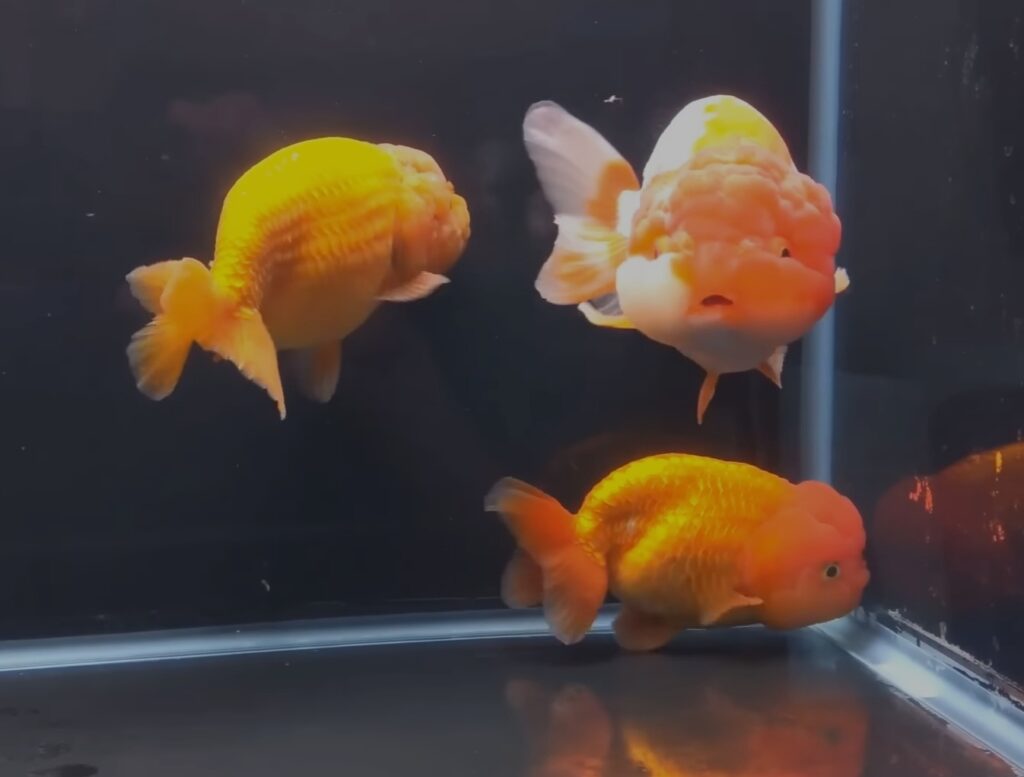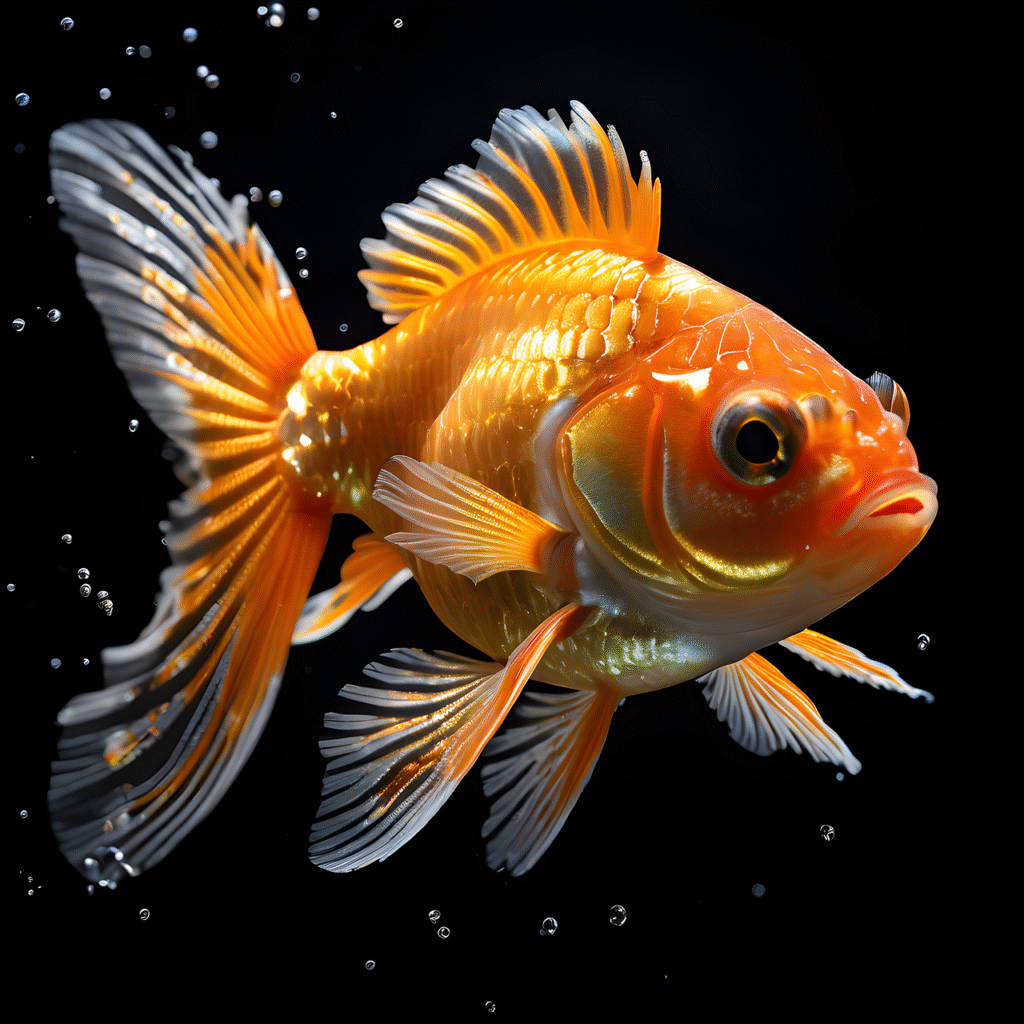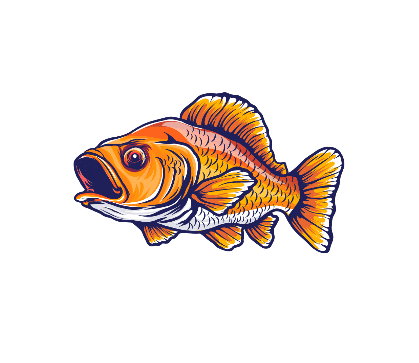
Goldfish are omnivorous and can eat a variety of foods. If you are wondering what can goldfish eat other than fish food, you have come to the right place. This guide will also explain what can goldfish eat in terms of healthy options.
In this blog, I will share healthy food options for your goldfish.
Goldfish can eat various vegetables, such as peas, spinach, cabbage, zucchini, lettuce, carrots, sweet potatoes, potatoes, broccoli, lima beans, pumpkin, kale, chard, cauliflower, and cucumber slices.
It’s essential to research healthy food options for your goldfish and change their water regularly.
Remember to finely chop the food before feeding your goldfish and avoid overfeeding. Set a specific time each day for feeding.
Table of Contents
Can goldfish eat bread crumbs?
Goldfish cannot eat bread crumbs because they are harmful.
Bread expands in their stomachs, potentially causing constipation or severe digestive issues.
Instead, feed them healthy options like finely chopped vegetables, such as peas, spinach, or zucchini, as mentioned earlier.
Bread contains gluten, yeast, salt, and flour, which are unsuitable for goldfish.
Gluten and yeast can disrupt digestion, leading to serious health problems.
To ensure your goldfish thrives, stick to a balanced diet, avoid overfeeding, and maintain clean water.
Always research safe foods, monitor their health, and consult experts if issues arise to promote their well-being and longevity.
Can goldfish eat apples?
What Can Goldfish Eat?

Yes, goldfish can eat apples—they’re a super healthy treat! Not only apples, but lots of other fruits are awesome for goldfish if you get them ready right.
Try these safe fruits: apples, bananas, grapes, mangoes, oranges, raspberries, watermelon, strawberries, blueberries, and pears.
Always peel and chop fruits into tiny bits, and take out seeds or pits since they can hurt your goldfish.
For example, cut apples into small pieces and skip the seeds. Feed fruits just once or twice a week to avoid tummy problems.
Check what foods are safe, keep the tank water clean, watch your goldfish to make sure they’re happy, and change their food every few days to keep things fun.
Can goldfish eat cheese?
No, goldfish cannot eat cheese.
Cheese is a dairy product, and goldfish don’t have the enzymes needed to digest dairy, which can lead to tummy problems like constipation or bloating.
It’s best to avoid feeding them cheese to keep them healthy.
Why Is Cheese Bad for Goldfish?
Goldfish are omnivores, meaning they eat both plants and small animals, but dairy isn’t part of their natural diet.
In the wild, they eat things like algae, insects, and small crustaceans.
Cheese contains lactose and animal fats, which goldfish can’t break down, potentially making them sick over time.
What Should You Feed Them Instead?
Stick to foods that are safe and healthy, like: Fish flakes or pellets made for goldfish.
Small treats like boiled peas, spinach, or bloodworms.
Feed them only what they can eat in 2-5 minutes, once or twice a day, depending on the water temperature.
Quick Tips for Goldfish Care
If you’re out of fish food, you can give them a small amount of cooked vegetables like peas or zucchini, chopped into tiny pieces and with seeds or tough parts removed.
Always check what’s safe, keep their tank water clean, and watch them to make sure they’re happy and healthy.
Additional Tips for Goldfish Owners
To keep your goldfish happy and healthy, vary their diet every few days.
For example, feed fish flakes on Monday, boiled peas on Wednesday, and bloodworms on Saturday.
This keeps them interested and ensures they get a range of nutrients.
Always research safe foods, and if you’re unsure, stick to products labeled for goldfish.
Can goldfish eat dog or cat food?
No, goldfish shouldn’t eat dog or cat food.
It’s tempting to share whatever’s handy, but these foods are designed for carnivores like dogs and cats, who need lots of protein and fat.
Goldfish, on the other hand, are omnivores that thrive on a diet higher in carbs and lower in protein.
Their little digestive systems can’t handle the rich stuff in pet food, which could lead to tummy troubles, swim bladder problems, or even damage to their organs over time.
Why It’s a Bad Idea
Dog and cat food might seem like a fun treat, but it’s too heavy for goldfish.
Imagine feeding a kid nothing but steak—it’s just not right for their system! Too much protein and fat can clog things up, making your fish sluggish or sick.
A healthy goldfish needs balance, not a meaty overload.
What to Feed Instead
Luckily, goldfish love variety, and there are tons of safe, easy options:
Veggies: Try peas, chopped spinach, or bits of lettuce—they’re like a crunchy salad for fish.
Fruits: Tiny pieces of apple, banana, or even watermelon make a sweet snack.
Fish Food: Grab flakes or pellets made for goldfish—they’re packed with the right nutrients.
Tips for Happy Goldfish
Goldfish are little beggars—they’ll always act hungry.
Feed them small pinches two or three times a day, and scoop out leftovers to keep the tank clean.
Dirty water from uneaten food can make them sick, so less is more. With the right diet, your goldfish will swim around, bright and lively, for years.
What Foods Are Toxic for Goldfish?
Have you ever wondered what foods could harm your goldfish?
These little swimmers are curious eaters, but some snacks are downright toxic to them.
Let’s dive into what to avoid tossing into their tank! Chocolate tops the list—it’s got theobromine, a compound that’s deadly for goldfish, even in tiny amounts.
Bread might seem like a fun treat, but it swells up in their stomachs, causing blockages or constipation.
Skip processed foods like chips or crackers, too; the preservatives and artificial stuff can mess with their digestion and poison them over time.
Onions, garlic, and spicy foods? Nope—they irritate their systems.
Even citrus fruits like oranges are too acidic for their delicate tummies. And dog or cat food? Way too fatty and protein-heavy for these guys.
Practical tip:
If your goldfish nibbles on something bad, swap out the tank water quickly to flush toxins.
Acting fast can save the day! Watch for odd behavior—like sluggish swimming or refusing food—and call a fish-savvy vet if you’re worried.
Here’s a cool tidbit:
Goldfish can recognize you! Keep them thriving with safe eats like flakes, pellets, or fun treats like a shelled boiled pea or a lettuce nibble.
They’ll repay you with dazzling colors and happy swims! Stick to these, and your goldfish will be golden.
What nutrients do Goldfish require for its fast growth?

Nutrient Requirements:
Goldfish thrive on a balanced diet for fast growth. Choose goldfish-specific pellets or flakes with at least 30% protein, and ensure younger fish get 35-40% to support rapid development.
Live or frozen foods, such as brine shrimp and bloodworms, are great for growth.
Add vegetables like peas, lettuce, and kale to aid digestion. Feed small amounts twice a day, ensuring they eat all food in a few minutes to prevent overfeeding.
A clean, spacious tank with good filtration also supports healthy growth.
Key Nutrients for Fast Growth
Research consistently highlights the importance of specific nutrients for goldfish growth:
Protein:
Protein is the primary energy source and crucial for tissue development.
Studies suggest goldfish need at least 30% protein for maintenance, with juveniles and breeding fish requiring 35-40% for fast growth.
Higher protein levels can lead to rapid growth but may increase ammonia production, impacting water quality.
Emphasize avoiding cheap protein sources with supplemented amino acids, advocating for high-quality fish meals.
Live and Frozen Foods:
Live foods such as brine shrimp, daphnia, and bloodworms mimic natural feeding behaviors and provide essential proteins and amino acids.
Frozen or freeze-dried alternatives offer similar benefits without disease risks, making them suitable for growth enhancement.
Vegetables and Fiber:
Goldfish benefit from vegetables like peas, lettuce, kale, spinach, and cucumber for fiber, supporting digestion due to their long intestinal tracts.
However, fiber should not exceed 20-30%, as goldfish have limited digestive capacity for high-fiber diets.
Fats and Lipids:
Fats, particularly unsaturated fats like fish oil, are essential, with recommended levels of 5-8% for adults and slightly higher for juveniles. Excess fat can impact liver function.
Vitamins and Minerals:
Vitamin C, a water-soluble nutrient critical for immune function, decreases faster in flakes than pellets, suggesting pellets may retain nutrients better.
Other vitamins and minerals in high-quality diets support overall health and color enhancement.
FAQs
What vegetables can I feed my goldfish?
Goldfish enjoy peas, lettuce, and spinach. Blanch them first for easy digestion.
What foods should I avoid?
Skip chocolate, caffeine, alcohol, and processed human foods.
Is bread safe for goldfish?
No, bread causes digestive issues and pollutes water. Opt for safer choices.
Conclusion
Goldfish can thrive on more than just fish food.
Safe alternatives include vegetables like peas and lettuce, fruits such as apples and melons, and protein-rich insects like brine shrimp.
Avoid harmful options like bread or processed snacks, which can upset their digestion.
For a balanced diet, feed them 2-3 times daily—only what they can eat in 2-3 minutes. Variety keeps them healthy and vibrant.
If you like the post, do share your thoughts.
I am Hemanta Kumar Singh the owner of this wonderful website, I am 23 years old Blogger from West Bengal, India.
